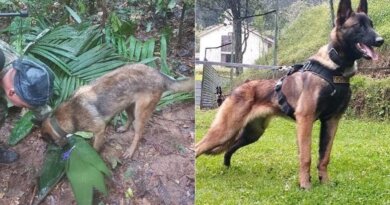Is Naloxone in Your First Aid Kit for Opioid Overdose?
“You would have looked at my sons and never known,” says Bonnie Milas, MD.
She’s speaking about the accidental opioid overdoses that killed her two adult sons in 2018 and 2019. She and other doctors say there’s something that could spare many other families from going through the same tragedy.
It’s naloxone, a medication that can reverse an opioid overdose and is available without a prescription, or “over the counter,” as Narcan nasal spray. It won’t hurt someone. And you don’t need special medical training or certification to use it.
Naloxone should be in all first aid kits, Milas says, because you never know who might be at risk.
Her sons were both athletes who excelled in school and showed no signs of addiction. Milas asked WebMD not to publish her sons’ names for privacy reasons.
“People have in their minds what a drug user looks like,” Milas says. “They picture someone who’s out on the street. We need to recognize that it’s not just certain people who become addicted. It’s all of us. There are some very highly functional individuals who are using and it’s kept secret.”

Milas administers opioid medications to her patients every day as part of their medical care. She’s also had to use naloxone to save her younger son twice in the 48 hours after he was discharged from an inpatient treatment facility.
The first time, she found him on the kitchen floor. He was unconscious, his lips blue. She called for her father-in-law to call an ambulance as she grabbed the naloxone.
The next day, she found her same son locked inside the bathroom. His body was slumped against the door. She got the naloxone, took the bathroom door off its hinges, and revived her son again.
“No one should have to go through that,” Milas says. “It’s a very hard thing to watch and experience as a parent, as a family member, as a friend.”
An accidental overdose of fentanyl, a synthetic opioid, later took her youngest son’s life. (Milas doesn’t speak publicly about her older son’s death.) As a prescription medication, fentanyl is approved to treat patients with severe pain, especially after surgery. But it’s also widely abused and illegally made. At 50 to 100 times stronger than morphine, fentanyl is part of a national epidemic of opioid-related deaths that killed more than 564,000 people in the U.S. from 1999 to 2020, CDC data show.
It can happen very quickly.
“Taken orally, fentanyl can render the person unconscious in minutes, and if injected or smoked, as little as 90 seconds,” Milas says. “There is simply not enough time to wait for paramedics to arrive. It’s a potentially terrifying situation to be in if you are first on the scene and not prepared. Having naloxone on hand and basic life support skills is training to be a lifesaver.”
Within 2 to 3 minutes, naloxone reverses an opioid overdose. It works in the brain, binding to certain receptors and displacing the opioid. That allows normal breathing and consciousness to come back.
Naloxone’s effects can last up to 90 minutes. Someone may need multiple doses if they have fentanyl in their system.
When given quickly after an opioid overdose, it can save a person’s life. If they’ve overdosed on something else, naloxone won’t harm them.
It’s especially important to have naloxone if you or someone you know has opioid use disorder. In fact, the CDC likens carrying naloxone to carrying an epinephrine auto-injector (like an Epi-Pen) if you have allergies.
Always call 911 if someone has overdosed. Stay with them until emergency medical care professionals arrive, since the person needs at least 4 hours of monitoring and medical attention to make sure their breathing is back to normal.
In February, Milas testified before an FDA committee in favor of making naloxone available over the counter. (The FDA approved over-the-counter Narcan nasal spray in March 2023.)
“Now that you can pull naloxone off the shelf right next to the Tylenol, it removes the stigma and makes it mainstream,” Milas says. “So the soccer mom is going to go pick it up because she wants to be a responsible mom, a responsible citizen.”
Since the FDA approved over-the-counter naloxone nasal spray, the American Medical Association has called for health insurers to cover naloxone at no cost or a low cost and for it to be prominently placed on store shelves. The average cost for a box of generic naloxone spray (with two bottles in the box) is about $73, not including discounts or insurance.
While Milas had to use naloxone on her son at home, overdoses can happen anywhere.
It was in a public space – a bathroom in a Boston-area shelter for unhoused people – where Avik Chatterjee, MD, MPH, first administered naloxone. His patient was a woman who had become unconscious after using and had turned blue.
Chatterjee used naloxone on her. Soon after, he recalls, she was breathing on her own, sitting up, and even talking.
“It’s kind of this miraculous thing,” Chatterjee says of naloxone. “You don’t have anything in medicine that works so effectively, so dramatically, and in such a high percentage of the time as you do naloxone for drug overdoses.” He calls naloxone “very safe and lifesaving.”
Chatterjee, a Boston University assistant professor and primary care and addiction medicine physician, provides addiction medicine care at several shelter-based clinics through the Boston Health Care for the Homeless Program. He says many of his patients don’t have a home with a medicine cabinet to turn to for naloxone, so efforts to make naloxone widely available is critical.
“Even the best-meaning person in long-term sobriety or recovery can relapse,” Chatterjee says.
“I’ve lost a lot of patients and physicians to overdoses, and I’ve had a couple of really, really scary overdoses myself,” says Peter Grinspoon, MD, a Harvard Medical School instructor and primary care physician at Massachusetts General Hospital.
Grinspoon struggled with addiction at the start of his medical career. He’s been in recovery for more than 15 years. He’s written about it in books including Free Refills: A Doctor Confronts His Addiction.
“Naloxone is to help make sure that people don’t die, plain and simple,” says Grinspoon. “It’s easy enough to carry it. You just put it in your pocket.”
It’s crucial, Grinspoon says, to recognize addiction as a complex medical condition, deserving of compassion and understanding.
Chatterjee agrees. He calls harm reduction practices, such as making naloxone available, “a philosophy based in love because it’s the act of caring for another person’s well-being.”
For Milas, working to make naloxone widely available is part of her sons’ legacy. She leads REVIVEme, an initiative of the American Society of Anesthesiologists that provides resources such as downloadable infographics and tutorials on how to use naloxone.
“I think that my sons would have been proud to see me represent a group of individuals – mothers, fathers, family members – who has suffered this loss,” Milas says. “Everyone deserves the right to be saved, to have a chance at recovery. Naloxone gives them another chance.”
Read more about harm reduction for people with opioid addiction.


